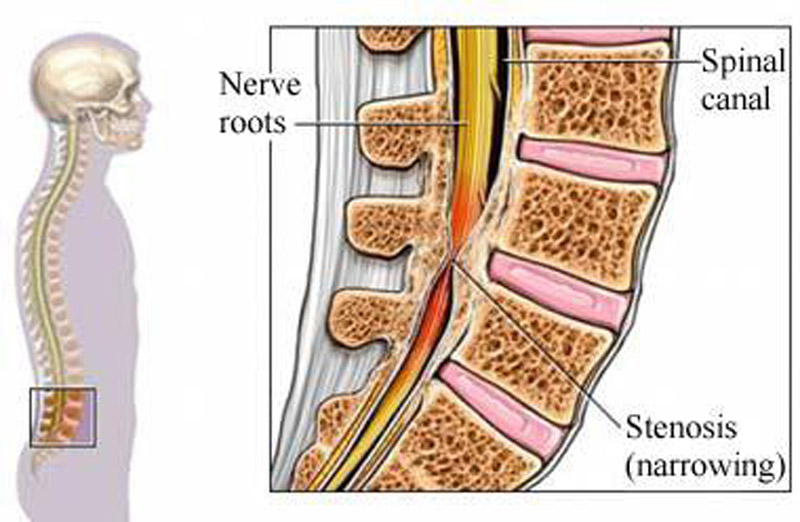Consensus on the Clinical Diagnosis of Lumbar Spinal Stenosis: Results of an International Delphi Study
SOURCE: Spine (Phila Pa 1976). 2016 (Aug 1); 41 (15): 1239–1246
Christy Tomkins-Lane, PhD, Markus Melloh, MD, PhD, Jon Lurie, MD, et. al.
Department of Health and Physical Education,
Mount Royal University,
Calgary, Canada
STUDY DESIGN: Delphi.
OBJECTIVE: The aim of this study was to obtain an expert consensus on which history factors are most important in the clinical diagnosis of lumbar spinal stenosis (LSS).
SUMMARY OF BACKGROUND DATA: LSS is a poorly defined clinical syndrome. Criteria for defining LSS are needed and should be informed by the experience of expert clinicians.
METHODS: Phase 1 (Delphi Items): 20 members of the International Taskforce on the Diagnosis and Management of LSS confirmed a list of 14 history items. An online survey was developed that permits specialists to express the logical order in which they consider the items, and the level of certainty ascertained from the questions. Phase 2 (Delphi Study) Round 1: Survey distributed to members of the International Society for the Study of the Lumbar Spine. Round 2: Meeting of 9 members of Taskforce where consensus was reached on a final list of 10 items. Round 3: Final survey was distributed internationally. Phase 3: Final Taskforce consensus meeting.
RESULTS: A total of 279 clinicians from 29 different countries, with a mean of 19 (±SD: 12) years in practice participated.
The six top items were
“flex forward to relieve symptoms,”
“feel relief when using a shopping cart or bicycle,”
“motor or sensory disturbance while walking,”
“normal and symmetric foot pulses,”
“lower extremity weakness,” and
“low back pain.”
There are more articles like this @ our:
Low Back Pain and Chiropractic Page
and the:
CONCLUSION: This is the first study to reach an international consensus on the clinical diagnosis of lumbar spinal stenosis (LSS), and suggests that within six questions clinicians are 80% certain of diagnosis. We propose a consensus-based set of “seven history items” that can act as a pragmatic criterion for defining LSS in both clinical and research settings, which in the long term may lead to more cost-effective treatment, improved health care utilization, and enhanced patient outcomes.
LEVEL OF EVIDENCE: 2.
Keywords: lumbar spinal stenosis, diagnosis, Delphi study, history, consensus, neurogenic claudication
From the FULL TEXT Article:
INTRODUCTION
Lumbar spinal stenosis (LSS) is a common degenerative condition of the spine, leading to significant pain, disability and functional limitations. [1–9] The prevalence of LSS is estimated to be 9% in the general population, and up to 47% in people over age 60. [10] LSS is the most common reason for spine surgery in patients over 65, [11] with a current estimated 2-year cost of $4 billion in the US. [12, 13] Given the aging population, both the prevalence and economic burden of LSS are expected to increase dramatically. [1, 11–16]
Lumbar spinal stenosis, first described by Verbiest in 1954, [18] has evolved from an anatomical concept to a poorly defined clinical syndrome. [19] LSS is currently recognized by the North American Spine Society as “a clinical syndrome of buttock or lower extremity pain, which may occur with or without back pain, associated with diminished space available for the neural and vascular elements in the lumbar spine.” [1] However, there is no ‘gold standard’ for diagnosis of LSS. [20, 21] Currently, diagnosis is based on a complex integration of factors including history, physical examination, and imaging studies. [20, 22–24]
Clinical care and research in LSS is complicated by the heterogeneity of the condition, and the lack of standard criteria for diagnosis. [20–23, 25] This dearth of standardized criteria in studies of treatment outcomes has resulted in a lack of clarity regarding which management approaches are best. [26–28] Given these significant limitations in LSS care and research, along with increasing prevalence, [10, 13, 24] and increasing costs associated with treating LSS, [12–15, 29–33] it is imperative to establish a set of core diagnostic criteria. [20, 21, 34] With the rise of personalized medicine and the need for cost-effective and optimized health-care utilization, proper diagnostics have taken center-stage. Defining a core set of diagnostic criteria for LSS would refine outcomes assessment and lead to more cost-effective and targeted clinical care.
In the absence of valid objective criteria, it has been suggested that expert opinion be considered the ‘gold standard’ in the diagnosis of LSS. [6] The most valid approach to establishing a set of diagnostic criteria is to leverage the expertise of clinicians experienced in the diagnosis and treatment of LSS. This type of study is known as a Delphi approach, and has been applied successfully in defining diagnostic criteria for low back pain. [35, 36] While there have been a number of attempts to define diagnostic criteria for LSS, none have used such an international expert consensus approach.
Given the complexity of diagnosing LSS, it is logical to approach a diagnostic consensus in stages, starting with historical findings. Many studies have demonstrated the importance and practicality of the patient history in the diagnosis of LSS. [9, 20, 22, 37–40] However, no studies to date have employed a Delphi consensus approach to determine which factors are most important. The purpose of this study was to reach a consensus among international experts on which factors obtained from the history are most important in the diagnosis of clinical LSS. To do this we leveraged innovative online survey methodology to reach a large multi-disciplinary, and international group of LSS experts.
Read the rest of this Full Text article now!




Leave A Comment